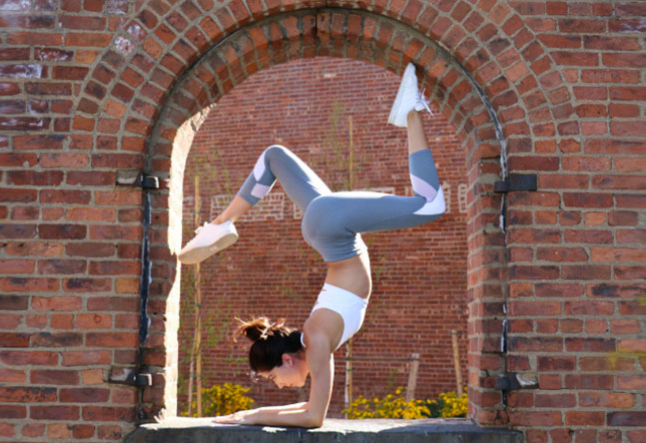how yoga helps you to do an inversion pose

dare to dive into the sea
“Life begins at the end of your comfort zone.” You’ve probably heard this quote many times before. Maybe it sounds a bit cliché or you think, “Do I really need to do bungee jumping to prove that I am actually living?” However, I understood the true meaning of this quote after I started to practice the headstand pose.
Everybody has their comfort zone. For some it is their relationship, for others it’s their hometown. Because of this comfort zone, some people will not leave their jobs, stay in bad relationships, or refuse to change their hairdressers even if they know that they can have a better one. A comfort zone is something that we hold on to, something familiar. It feels good to stay in the comfort zone because it is known, and known things cannot harm us. We are able to control familiar things. Leaving the comfort zone means stepping into something unknown, and it can be daunting. Remember the moment when you wanted to dive into the cold blue sea. It is hot outside, you want to cool down, but the sea is cold so you don’t dive in because you are in your comfort zone. The worst thing with that is if you stay outside longer the sea feels colder and colder. In reality the temperature of the sea didn’t change, however you stayed so long outside (in your comfort zone) that it seems impossible to dive into that beautiful sea, even if you know how relaxing it will be to swim in it. Here comes the importance of a yoga practice. Yoga will show you how to swim in that sea.
One of the most challenging types poses in yoga are inversions. At my first yoga lesson, the instructor encouraged me to do a headstand. I couldn’t do it. I thought I need to build stronger abdominal muscles. After almost 6 months, I had stronger muscles but I couldn’t invert myself. So I thought it was my balance. Another 6 months passed, and I still couldn’t do it, even if I was doing a very balanced tree pose. Then, I realized my problem wasn’t about strength or balance. It was about my comfort zone. This realization came up with some partner yoga practices. I couldn’t let go. I couldn’t trust my partner and let my partner have the control, and so both me and my partner were failing in the asanas because of my comfort zone. I realized that I was doing the same thing to myself with the inversions. I couldn’t let go off my fear. I couldn’t trust myself and leave my comfort zone. What now?
Through yoga practice, a person becomes aware of their body. They start to know their own body better than before. In every practice the body reacts differently to the same asana. After some time maybe there is some progress. Some asanas become easy and more challenging poses are tried. With those more challenging poses you start to trust yourself. You start to see the power in you, but at the same time you realize the power of breath. While at first you were trying to align your breath with the asana, you see that with the challenging poses you automatically do that because they are impossible to do without stable breathing. And then one day, with a completely clear mind and aligned breath, I was practicing the half headstand, I was not thinking that I could invert myself, but suddenly I found myself at the wall upside down.
Now I see the path to inversions like a triangle. Obviously you can’t invert yourself by only leaving your comfort zone and trusting yourself, you need a base with two corners. One corner is strength and the other corner is balance. Both corners can be trained by other activities, like fitness exercises. However, the most important corner, the top corner, is courage. Leaving your comfort zone, letting go of your fear and trusting yourself; that you will learn only with yoga practice. Once you invert yourself you will more easily leave your comfort zone. So are you ready to dive into the sea?
Read next >> the ultimate yoga challenge